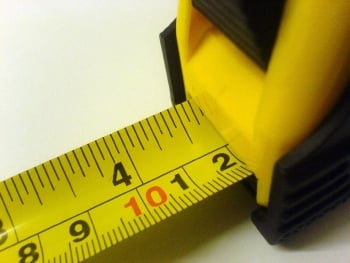 The publication of BS 9999 and BS 9991 has been a breath of fresh air in some ways, but of course not everything new is perfect.
The publication of BS 9999 and BS 9991 has been a breath of fresh air in some ways, but of course not everything new is perfect.
New recommendation in BS 9999 and BS 9991
One new recommendation that appeared unheralded in these standards is for fire fighting stairs higher than 30m to be protected by pressurisation systems. This is in addition to the existing recommendation for sprinklers in buildings with a storey above 30m.
So why is pressurisation, undoubtedly a good form of smoke control system but complex to design, install and commission, considered essential in moderately tall buildings?
Validated mechanical shaft systems in taller buildings
The truth is I don’t really know. I certainly wouldn’t argue with avoidance of AOV (Automatic Opening Vent) systems above 30m as their well known susceptibility to adverse wind effects can only increase with building height. But in 2002 BRE introduced the BRE shaft, with CFD (Computer Fluid Dynamics) validation for its effectiveness in keeping stairs clear of smoke in buildings up to 101 storeys high, over 10 times the new 30m limitation, and since then specialists have developed and validated mechanical shaft systems as good as or better than the BRE shaft and have installed them in buildings of all shapes and sizes.
Current approved projects
Two current examples among many, St Georges Tower, Vauxhall (residential, 52 storeys) and 20 Fenchurch Street, London (commercial, 38 storeys) are being built with Colt Shaft mechanical shaft systems to protect the fire fighting stairs. The designs have been validated and have been approved by London Fire Brigade, who expect high standards of performance for the protection of fire fighting stairs.
Reasons why mechanical shaft systems can be better than pressurisation
What is the evidence that pressurisation is essential above 30m? In fact there are reasons to believe that mechanical shaft systems may perform better than pressurisation in tall buildings. A mechanical shaft protects the stair by positive extract from the fire fighting lobby on the fire floor only and is relatively unaffected by stack pressures in the stairs or wind pressures, two problematic influences on pressurisation systems in tall buildings which the CEN (European Committee for Standardisation) working group revising EN 12101-6 (the pressurisation system standard) is currently wrestling with.
Conclusion
So, is the recommendation for pressurisation systems in fire fighting stairs above 30m a laudable but misguided attempt to improve fire safety?
On the basis that a pressurisation system is generally more complex, more expensive and harder to maintain at full performance than a natural or mechanical shaft system and does not necessarily provide better protection to the stair, I suspect it is.
If you would like to read more on pressurisation systems please see our blog "Seven good practices for pressurisation systems" for further information.
 Paul Compton is Technical Director for Colt, experienced in smoke control, HVAC, solar shading and louvre systems.
Paul Compton is Technical Director for Colt, experienced in smoke control, HVAC, solar shading and louvre systems.


